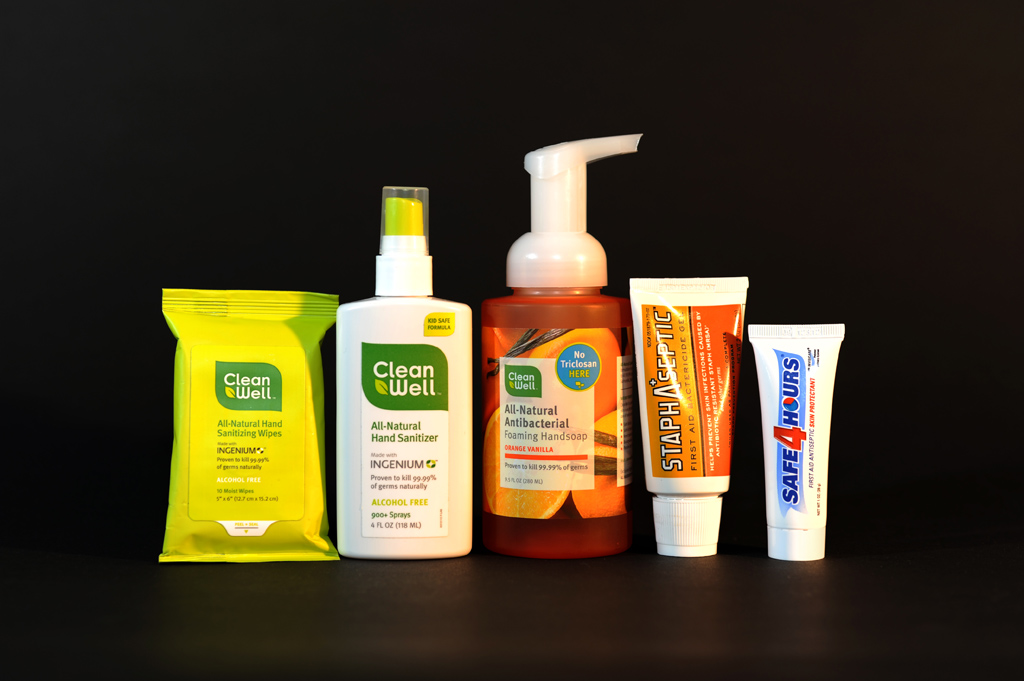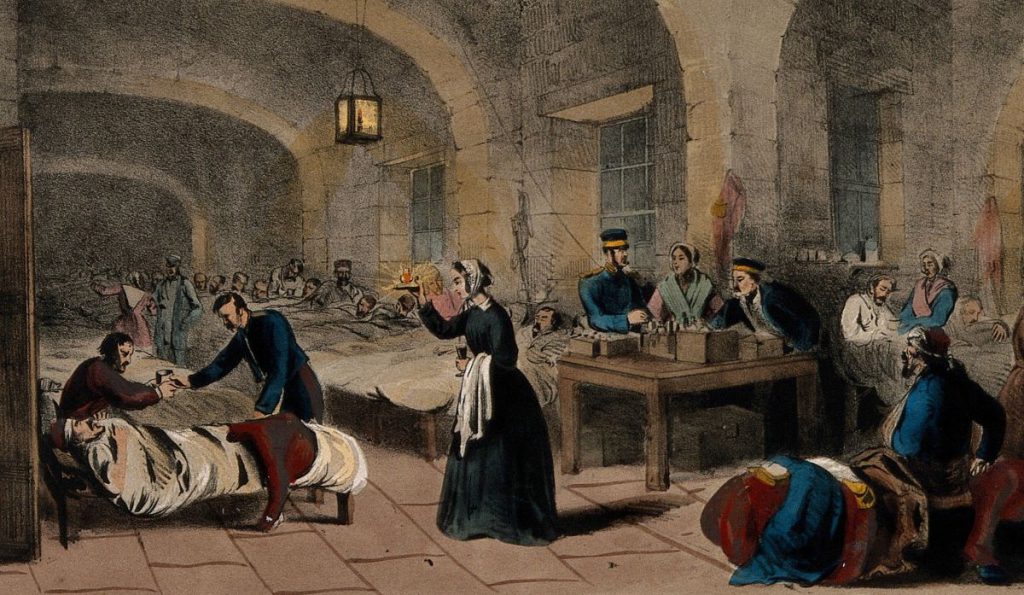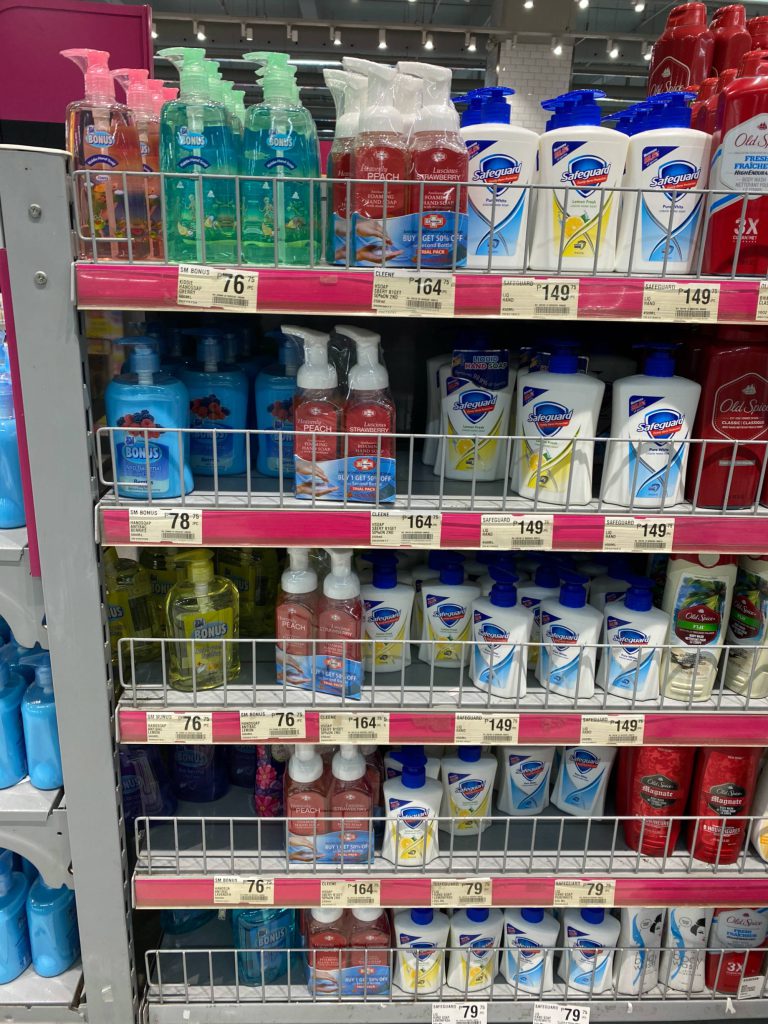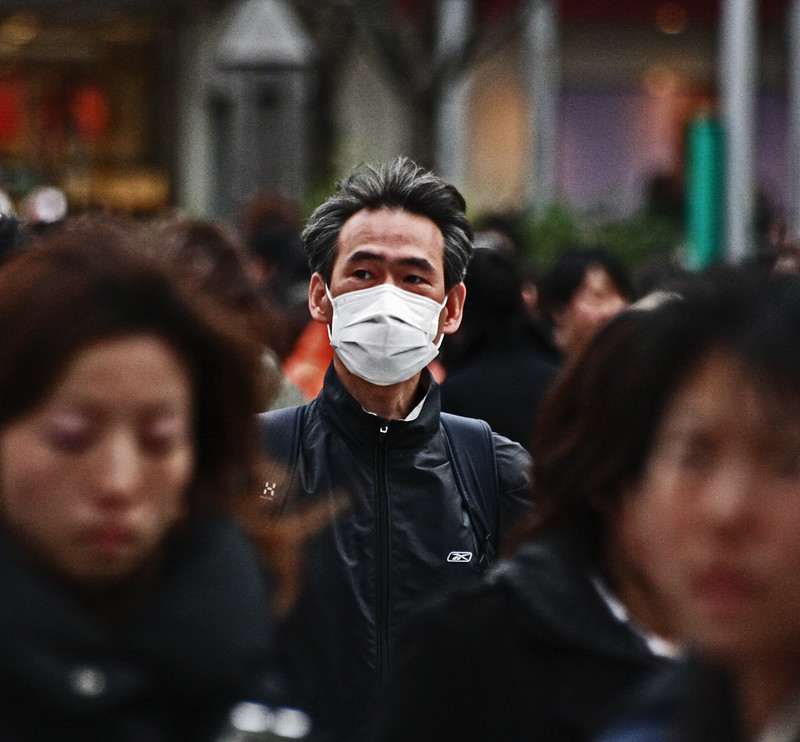Could COVID-19 Permanently Change Hand Hygiene?
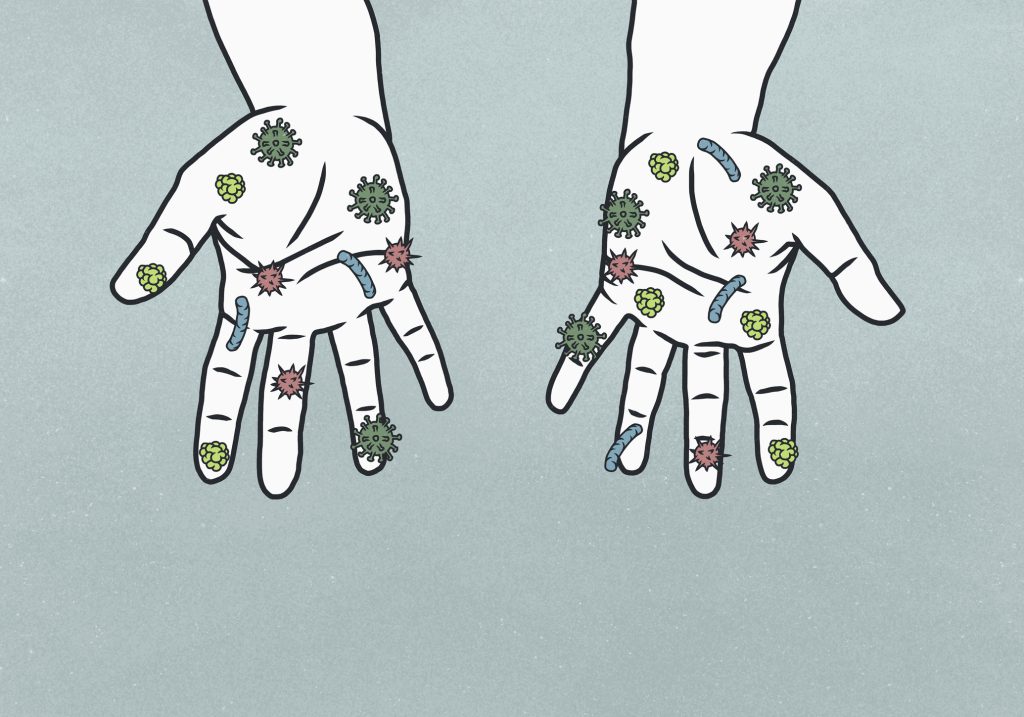
阅读本文:中文 (Chinese)
Here in the Philippines, as in many parts of the world, there’s been an outbreak of hand sanitizers. Since late January, pump dispensers and bottles have appeared everywhere: airports, schools, dining tables, handbags. In SM, the country’s largest chain of shopping malls, large containers of hand sanitizers greet visitors as they pass through security. “This is a sanitized zone,” SM’s posters read. “Thank you for using the alcohol/disinfectant provided.”
When the enhanced community quarantine started here on March 17, sanitizer showed up at road checkpoints. And though the shops in the mall are closed, customers can still shop at mall supermarkets—after the staff sprays alcohol on their hands.
This is not surprising. The COVID-19 pandemic has spurred people around the world to panic-buy Purell and other hand sanitizers, soaps, and antibacterial wipes. What is surprising is that, until the pandemic hit Western countries, the trend was going in the opposite direction.
Over the past decade, there’s been a growing concern that the impulse to kill all germs could have serious consequences, such as the creation of resistant superbugs. This has certainly impacted people’s hand hygiene habits.
For the last few years, the U.S. Food and Drug Administration (FDA) has advised people to stop using antibacterial soap, which is no more effective at preventing illness than regular soap and may negatively impact health. After discovering that common ingredients in antibacterial soap—most notably triclosan and triclocarban—disrupt hormones in lab animals and induce antibiotic resistance, the FDA banned those chemicals in 2016 and replaced them with alternatives.
However, when soap and water are unavailable, hand sanitizers and wipes are considered an acceptable alternative because they rely on alcohol to vanquish certain viruses (including coronaviruses) and bacteria.
Still, before the current pandemic, some health experts urged people to cut back even on alcohol-based hand sanitizer. That’s partly because some bacteria are becoming more tolerant of alcohol. And it’s partly due to concerns that sanitizers might harm the microbiome—the trillions of microbes living on and in the human body that are essential for healthy immune function, digestion, and more.
In recent years, many researchers have expressed concerns that over-sanitized societies are contributing to autoimmune disorders, allergies, and inflammatory conditions. This “hygiene hypothesis” is controversial, but there’s no question that scientists and the public have been awakening to the fact that some microbes can be beneficial.
Yet in the midst of the COVID-19 pandemic, everyone is understandably consumed by the process of hand sanitizing, and many people are finding it nearly impossible to buy sanitizer online or in stores. People who just weeks ago purposely petted dogs to boost the diversity of their microbiomes now find themselves disinfecting their hand sanitizer bottles with antibacterial wipes.
To understand this sudden change, it is revealing to explore the complex history and anthropology of hand cleansing. What motivates people’s handwashing habits? How do beliefs about sanitizers and microbes figure in? How have previous epidemics led to shifts in these notions? And what might the post-COVID future hold for hand hygiene?
Even before 19th-century scientists discovered that germs cause disease, handwashing was important for hygienic and symbolic purposes in many societies and religious traditions. The Prophet Muhammad, for instance, called on Muslims to wash their hands in a variety of situations, including “before and after any meal,” “after going to the toilet,” “after touching a dog, shoes, or a cadaver,” and “after handling anything soiled.”
In other societies, hand hygiene practices primarily originated from secular discoveries. In 1846, Hungarian doctor Ignaz Semmelweis observed that mothers giving birth were more likely to die if they were treated by doctors who handled cadavers beforehand. So, Semmelweis mandated that hospital staff wash their hands with soap and chlorine. He later became known as the father of hand hygiene. A few years later, forward-thinking nurse Florence Nightingale implemented handwashing in British army hospitals.
Despite the efforts of these pioneers, the practice of widespread, regular handwashing was slow to take off in most of the world. In the U.S., the first national hand hygiene guidelines weren’t published until the 1980s, spurred by several foodborne outbreaks and hospital-associated infections. It was in that decade that a global hand cleansing movement was born.
The rise of hand sanitizers mirrors this move of hand hygiene from the hospital to the world at large. Some accounts claim that Lupe Hernandez, a nursing student in California, invented hand sanitizer in 1966 when she realized alcohol mixed with gel could help hospital staff clean their hands in a jiffy.
Others trace its beginnings to Gojo, a family-owned Ohio company that launched a hand cleanser for auto mechanics then tweaked the recipe and released it in 1988 as Purell. After a slow start, the product achieved the near ubiquity it enjoys today.
Incidentally, alcohol-based hand sanitizers once caused ambivalence among Muslims, owing to alcohol being haram (forbidden). But today, Muslim health care workers largely accept them, even though the question of whether hand sanitizers are halal (permissible) continues to spark debate.
Epidemics have repeatedly stimulated the popularity of hand sanitizers. In the Philippines, a clothing store called Bench introduced Alcogel shortly after the 1997 H1N1 outbreak. It attained “phenomenal success,” according to Bench’s CEO Ben Chan. A similar sanitization surge occurred in the U.S. during the H1N1 epidemic of 2009.
As The Guardian’s Laura Barton wrote in 2012, “Thanks to the heightened fear of contamination experienced during recent flu epidemics, there is now a value judgment attached to carrying and using an antibacterial gel.”
Infectious disease outbreaks have also influenced societies’ soap-and-water habits. A 2003 study of six international airports found that in Toronto—which was hit by a major outbreak of severe acute respiratory syndrome (SARS) that year—95 percent of male travelers and 97 percent of female travelers washed their hands in the public restrooms. By contrast, in New York’s John F. Kennedy Airport, only 63 percent of men and 78 percent of women washed their hands.
So, is fear of disease a great motivator for soaping up or squirting hand gel? Perhaps during a pandemic, the answer is yes. However, fear generally has only a temporary effect on ablutions, according to a review led by anthropologist Valerie Curtis. Furthermore, Curtis has warned, creating cleanliness campaigns that play on people’s anxiety is not good for mental health.
Instead, she recommends harnessing a different emotion.
In the early 2000s, Curtis was aiming to change the handwashing habits of people in Ghana, where only 4 percent of adults regularly used soap after going to the bathroom. Previous campaigns had failed, and the situation was urgent, since an estimated 84,000 children were dying of diarrhea each year.
So, Curtis created a campaign designed to generate disgust. At the time, bathrooms were considered cleaner alternatives to pit latrines, so they didn’t inspire an ick factor that might prompt Ghanaians to lather up. Curtis and her group developed ads that showed mothers and children exiting bathrooms with their hands covered in purple pigment, which they then transferred to everything they touched. Soap use subsequently rose by 13 percent following trips to the toilet and by 41 percent before eating.
Such a campaign could inspire future efforts in the wake of COVID-19. In a study released in December 2019, researchers at the Massachusetts Institute of Technology (MIT) and the University of Cyprus calculated that if travelers at airports raised the bar on their soap-use habits, the impact of a future pandemic could be reduced by 24 to 69 percent. Yet the same researchers estimated that, although 70 percent of air travelers wash their hands, most do not wash them adequately (frequently, with soap, for at least 20 seconds), so only 20 percent actually have clean hands.
Pandemics arguably tip the scale back to a Pasteurian paradigm.
Shifting views about microbes may complicate the issue of disgust. MIT anthropologist Heather Paxson has written that many people hold a Pasteurian worldview, in which they “blame colds on germs, demand antibiotics from doctors, and drink ultra-pasteurized milk and juice, while politicians on the campaign trail slather on hand sanitizer.”
But Paxson also points out that there is an emergent, alternative paradigm: a “post-Pasteurian” view. Post-Pasteurians “might be concerned about antibiotic resistance” and embrace microbiome diversifiers like probiotics, unpasteurized milk, kombucha, and unsanitized handshakes.
Since Paxson’s work was published in 2008, this post-Pasteurian paradigm has grown. Scientists have even considered ways they might promote more positive feelings for microorganisms and foster collaboration in human-microbe relationships.
Pandemics arguably tip the scale back to a Pasteurian paradigm. Currently, people are bombarded with images (and imaginings) of a potentially deadly virus for which there is, at least at the moment, neither vaccine nor cure. Thus, hand sanitizers and wipes emblazoned with the statement “kills 99.9 percent of germs” give people a sense of control over an unseen, and suddenly hostile, microbial world.
But people’s hand hygiene practices are also motivated by a visible and often friendlier force.
In 2016, researchers found that doctors and nurses at a California hospital washed or sanitized their hands 57 percent of the time when they knew that designated “hygiene patrol” nurses were watching them but only 22 percent of the time when volunteers who they didn’t recognize observed them.
Just like the wearing of face masks, social pressure can certainly motivate people to clean their hands. A recent review from Curtis and other researchers showed that people were more likely to lather up when there was more than one person present in a public restroom.
Prompted by the COVID-19 pandemic, some health experts are attempting to “responsibilize individuals” by framing handwashing as a selfless act that saves lives. Social media campaigns like #SafeHands and #HandwashingHeroes are also making appeals to social responsibility by showing celebrities and adorable children getting sudsy to prevent disease.
Similarly, face masks became an emblem of “public spiritedness” during the 1918 influenza pandemic. In some places, for instance, Japan, the practice of wearing masks continued and became part of the country’s hygiene culture.
In the aftermath of past pandemics, people have generally returned to their previous handwashing habits. But the COVID-19 crisis is different from other outbreaks. Never before have hand sanitizing and social distancing practices been enacted on such a global scale.
So, could COVID-19 cause permanent changes to handwashing habits around the planet? Could hand sanitizer become an enduring symbol of responsible world citizenship? Could the pro-microbe perspective swing back to a Pasteurian panic over germs?
Only time will tell. But it’s something to ponder while you scrub or sanitize your hands for at least 20 seconds.

































